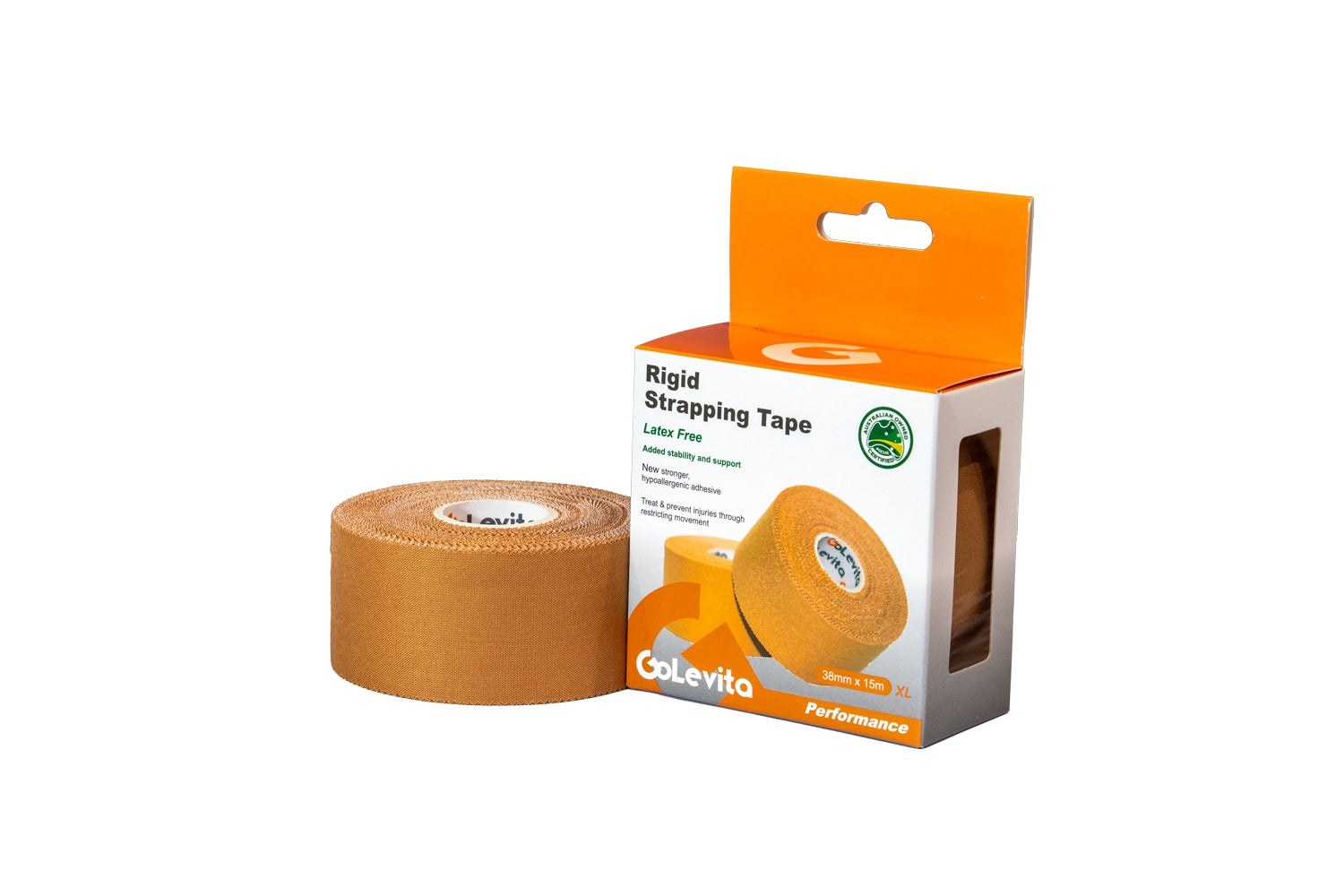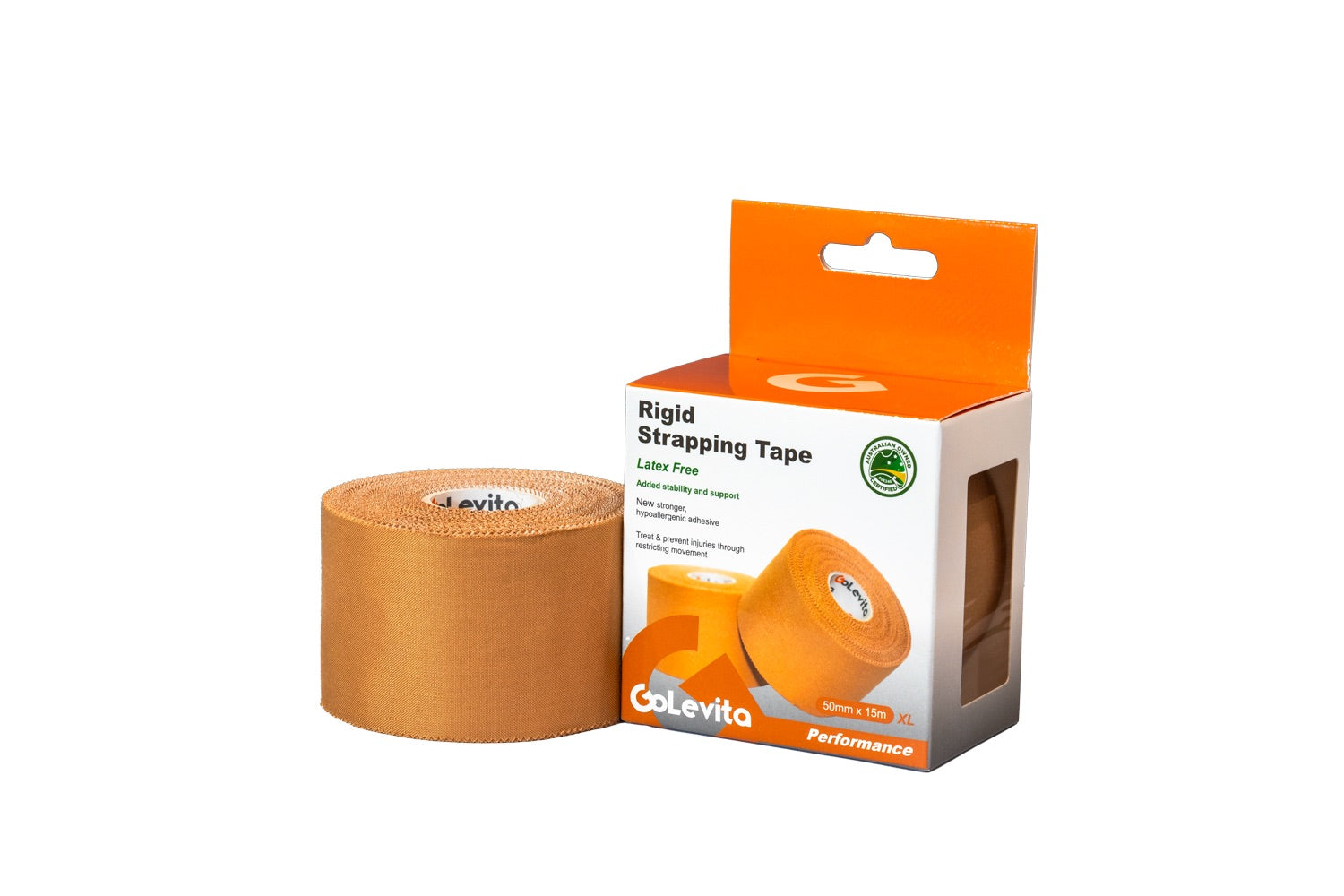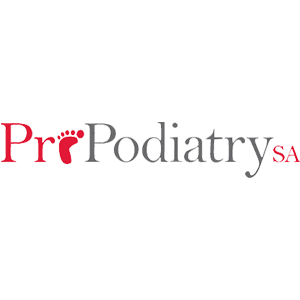Heel Lock Taping – Fat Pad & Neural Heel Pain
View our comprehensive video tutorial or follow the step-by-step guide provided below.
Step-By-Step
To help you get the most out of your taping, we’ve developed a comprehensive video tutorial series—filmed and demonstrated by experienced physiotherapists. You can also follow along with our detailed step-by-step written guides provided below.
Please note: The content on this platform is intended for educational purposes only. While our tutorials are presented by qualified professionals, they do not replace personalised medical advice. Always consult with a healthcare professional before applying any taping techniques, and use the information provided at your own discretion.
Objective
To demonstrate a targeted heel taping
technique used to stabilise the plantar fat pad and reduce symptoms associated
with heel pain, particularly when neural irritation or fat pad displacement is
involved.
Materials Required
· GoLevita 50mm Rigid Strapping
Tape
· Scissors or tape cutter
1. Positioning the Patient
Ensure the patient is lying prone or seated with the foot positioned neutrally.
Expose the plantar aspect of the heel and ensure the skin is clean and dry.
2. Apply Base Strips Across Plantar Heel
Apply two horizontal strips of 50mm rigid tape directly across the fat pad at the plantar heel.
Ensure even tension across both medial and lateral borders, avoiding the arch region. These base strips help centralise the fat pad and provide the foundation for further locking.
3. Lock from Medial to Lateral Border
Apply a strip from the medial border of the
heel, pulling gently laterally across the calcaneus.
Use light tension to guide the fat pad into its anatomical position and wrap around the posterior heel.
Secure above the lateral malleolus.
4. Lock from Lateral to Medial Border
Repeat the previous step in the opposite
direction, starting laterally and finishing on the medial ankle.
Ensure balanced pressure is applied to prevent rotational drift of the heel pad.
Key Notes
• Particularly useful in patients with heel
fat pad bruising, neural pain, or altered heel biomechanics.
• Reinforces anatomical alignment of the
plantar fat pad and may reduce irritation from medial/lateral heel movement.
• Avoid wrapping too tightly to preserve
vascular and nerve supply.













